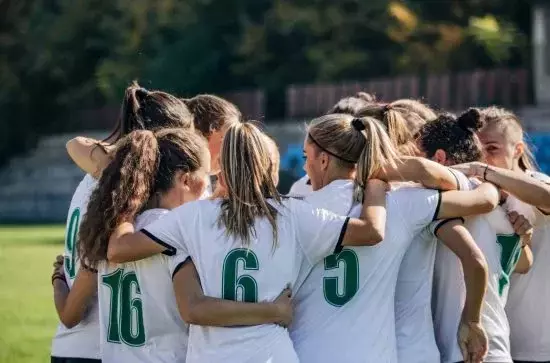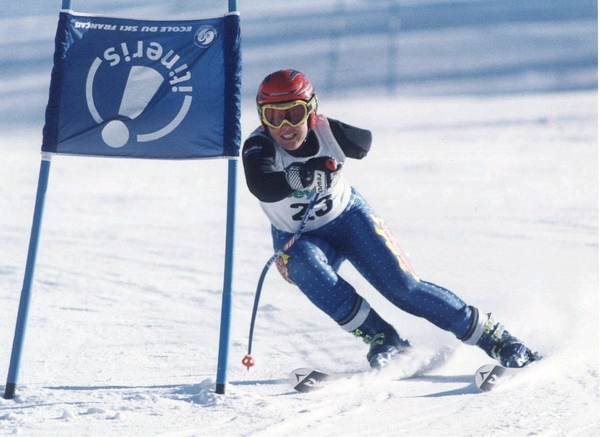MU report outlines ways to improve women’s sport coverage

National governing bodies, sponsors and government all have a role to play alongside media in improving coverage of women’s sports in Ireland, a new report by Dr Anne O’Brien of the Department of Media Studies found.
The report, Gender equality in media representation of sport in Ireland, examined why the media creates gendered sports content in the way that it does, citing international research that shows that women in sports media are generally under-represented, often mis-represented, framed through stereotypes and undersold in terms of talent and achievement.
According to the report, written in collaboration with the Federation of Irish Sport, this underrepresentation is consistent across media platforms.
It notes that during the 2012 London Olympic Games, the USA women’s soccer team won its fourth gold medal in five Olympics but only received 1% of airtime during primetime. But for individual sports at the 2012 Games, it was shown that NBC for the first time devoted more airtime to women’s sports than men’s but 43% of coverage was where the athletes were featured in a swimsuit or bikini.
The Irish context
The report set out to understand these issues in an Irish context by interviewing Irish journalists and media producers, reporters and presenters to get their perspectives on why content about women and sport is produced as it is and what can be done to improve the situation.
There was broad acceptance amongst respondents that gender inequality was a challenge for sports media. “I'm 40 years a journalist… it's been omnipresent in my working,” one participant in the study said.
Respondents cited a number of reasons for this, including media production constraints such as space, resources and a knowledge gap, and the structure of the workforce with women underrepresented in sports journalism. The audience for women’s sport was also seen as a challenge.
According to the report: “The question of an audience for women’s sport was replete with apparent contradictions. Some respondents argued that there was an audience for women’s sports, some argued there wasn’t, and some were ambivalent.”
Measures to promote change
The report recognises a willingness by media practitioners to tackle the issue, and crucially outlines an important role for other key stakeholders so that more balanced and equitable coverage is achieved. It identifies an increased role for national sports governing bodies, sponsors, male allies, as well as government and society more broadly.
Several respondents proposed that improvements could be made through increased interaction with national governing bodies (NGBs) while they also felt that sponsors had a role to play.
One respondent observed: “Sponsors like Lidl with Ladies Gaelic football have transformed that sport through their marketing smarts because a lot of Irish sport is still amateur run… if you bring the marketing power of a Lidl or an Aldi or a Dunnes Stores or a Vodafone to the table, then you're really putting this sport brand onto a different platform as regards the general public's accessibility.”
Many respondents saw male allies in media industries as crucial to the efforts to achieve gender balance but there was some ambivalence about the role of quotas.
“Swedish national television, they decided 5-6 years ago that they were going to go 50:50. So whenever they had a male sports story they were going to find a women's sports story. And funnily enough, they were able to find them,” said one participant in the study, who saw it a necessary next step for media outlets.
An issue for government and society
As well as seeing roles for NGBs, sponsors, male allies, and quotas in addressing inequality, a number of respondents also saw it as an issue that needed to be tackled by parties beyond the spheres of media and sport, including government and society more broadly.
“All the things that are being asked of the media are being done in terms of getting live coverage on television and radio, promotion and still the audience doesn't come. Well, then the questions clearly are wider than just the media,” one respondent said.
With regard to the role of government, respondents were supportive of initiatives that had been introduced, such as increasing the proportion of women on boards of sporting organisations.
“Their insistence on making the boards of the sports organisations 50:50… it's small thing, it won't necessarily change everything, but over time, when you have more women making decisions, just better decisions will be made in regards to women's sport,” a participant in the study said.
Report author Dr Anne O’Brien said: “Despite the myriad of challenges identified by journalists and producers with regard to tackling gender inequality in sports reporting, it was heartening that there was also a strong range of proposals for measures to tackle the challenge and a very strong sense of willingness on the part of media practitioners to engage with sports organisations, sponsors and society more generally to bring about change.”










































































































































































